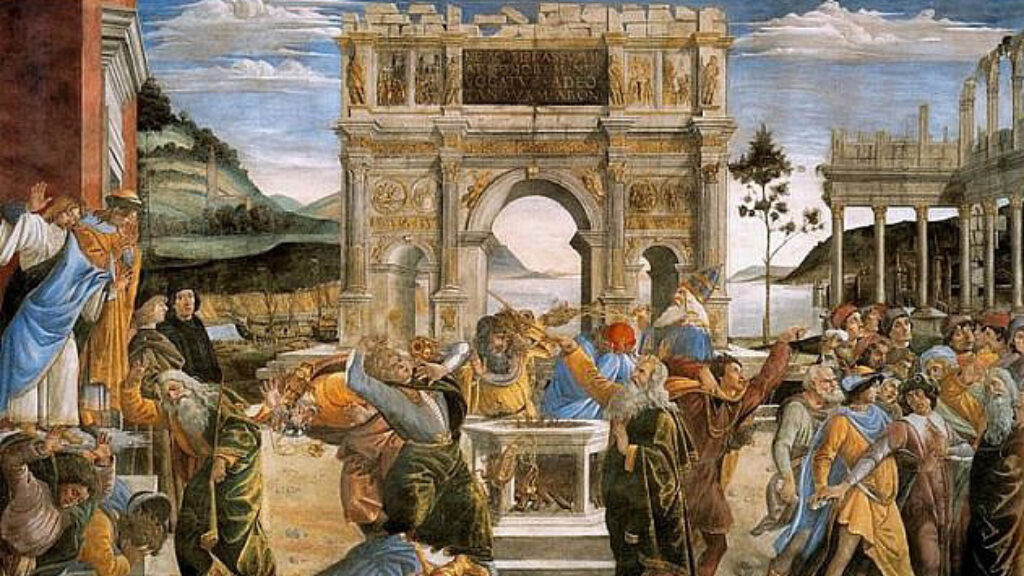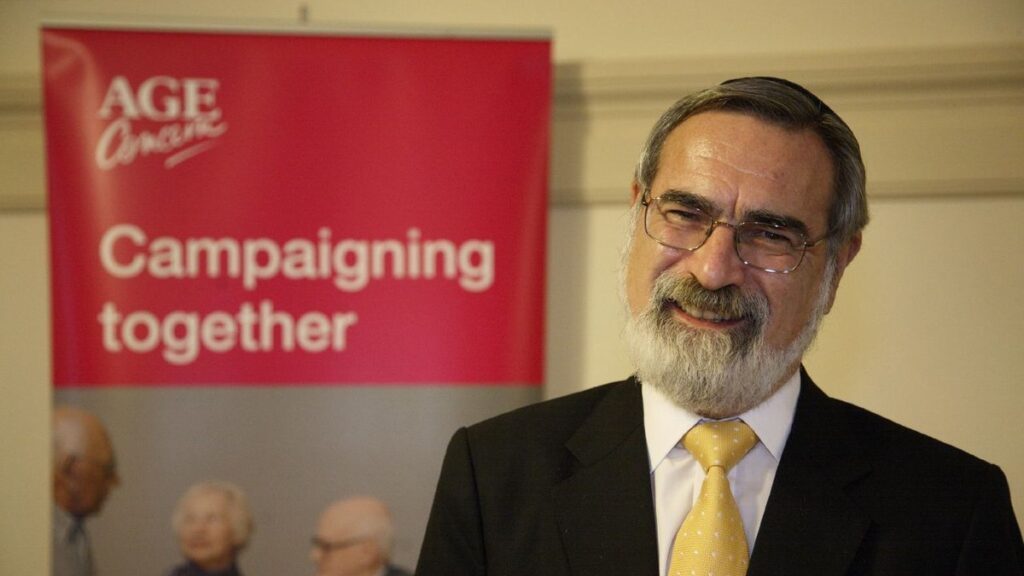Who Wrote the Talmud Bavli?
BY EITAN YUNGER
Who wrote the Talmud Bavli? This question is more complicated than it seems. Many people have attempted to give a simple answer. The Geonim. The Savoraim. The Amoraim. Ravina and Rav Ashi. The Jewish tradition offers many answers, but they leave me unsatisfied. It’s a question worth investigating in depth.
We should first understand what the Talmud Bavli—the Babylonian Talmud—is. The Talmud Bavli has two main components: the Mishnah and the Gemara. The Mishnah is a collection of Jewish laws (attributed to the Tannaim, the scholars of the immediate post-Second Temple period) and the Gemara is the commentary on the Mishnah, a series of debates, discussions, stories, and analyses that stretch over a period of several hundred years. The scholars of the Gemara are referred to as the Amoraim. The Gemara itself can be separated into three main categories: the halakha (law), the discussions to determine the halakha, and the aggadah (parables). Each of these categories are easily distinguishable from each other and serve different purposes.
To determine who wrote (or compiled) the Talmud Bavli, we should begin with a key source on this period: the Iggeret (letter of) Rav Sherira Gaon. Rav Sherira Gaon lived in tenth century Pumbedita (Babylonia), and learned and taught Torah at the same yeshiva as many of the Amoraim did hundreds of years before him. During his time there, the prominent Jewish community in Kairouan (modern day Tunisia) was facing heavy opposition from the Karites, who were Jews that did not believe in the validity of the Torah She-ba’al Peh (the Oral Torah). The rabbi of Kairouan, Rav Yaakov bar Nissim, sent a letter to Rav Sherira Gaon in Babylonia asking him to detail the history of the Mishnah and Gemara to help his community maintain their faith in the Oral Torah.
In response to Rav Yaakov bar Nissim’s request, Rav Sherira provided a lengthy history of the Tannaim and Amoraim, emphasizing the validity of the Mishnah and Gemara. Because Rav Sherira had lived (relatively) closer to the period of the Amoraim, and had learned in the Academy of Pumbedita, this Iggeret is the most important rabbinic text on that time period.
However, one key issue with the letter should be noted: two versions of Rav Sherira’s Iggeret exist today. The French version of the letter was popular among Ashkenazi rabbis in Europe and promulgates the claim that the Mishnah was not written down by Rabbi Yehudah HaNasi (referred to simply as “Rebbi”), but rather that he organized the Oral Torah. Many great rabbinic commentators of Ashkenaz, including Rashi, Smag, and Ritva, endorsed this approach.
The other version of Rav Sherira’s letter, the Spanish version, is written in a rare Greek script, and argues that Rebbi did in fact write the Mishnah. This is the view taken by the great Sephardic commentators, including the Rambam and Rabbi Shmuel HaNagid. For centuries, the Spanish version of Rav Sherira’s Iggeret has been considered more authoritative because it was passed down for many centuries within the Sephardic community. (It is important to note, however, that many contemporary rabbis, scholars, and academics have claimed that the French version is more authentic.)
The Iggeret of Rav Sherira offers an important foundation but does not entirely resolve the question of the Gemara’s authorship. The letters still leave significant ambiguity. As such, several additional theories prevail.
Some claim that the Gemara was written by the Geonim, the rabbinic leaders in Babylonia from approximately the sixth to eleventh centuries. Why? Firstly, many of the earliest manuscripts we have of the Gemara are dated to the time of the Geonim. Secondly, subsequent rabbinic authorities, including the Rashbam (Rabbi Shmuel ben Meir) argued that Rav Achai of the Gemara was actually Rav Achai Gaon, who lived 300 years after the last Amoraim.
Not everyone accepts these theories; just because our earliest manuscripts are dated to the time of the Geonim does not mean that earlier manuscripts didn’t exist. With regards to the identity of Rav Achai, many contemporary scholars suggest that he is of the last generation of Amoraim, since he is mentioned in that context in Rav Sherira Gaon’s Iggeret.
Another common answer is that Ravina and Rav Ashi wrote the Gemara. The basis for this claim is found in the Gemara itself in tractate Bava Metzia (86a). In this excerpt, Ravina and Rav Ashi are referred as “Sof Hora’ah,” commonly understood to mean the “last of the Amoraim.” They are believed to have assembled the halakhot, legal discussions, and the aggadah.
Historically, there was a significant increase in anti-Jewish decrees in Babylonia during Ravina and Rav Ashi’s lifetime, so it would make sense that this pair would feel the urgency to assemble the Gemara in order that it would not be forgotten in the mounting upheaval. There are also several mentions of Ravina and Rav Ashi in the Iggeret; according to Rav Sherira, after Ravina passed away, “Hora’ah (the arrangement of Amoraic statements) ceased.” But again, Rav Sherira is inconclusive on the question of the Gemara’s ultimate authorship.
There is another prevailing claim: that the Savoraim wrote the Gemara. The Savoraim were the generation of rabbis in Babylonia who came immediately after the Amoraim, but before the generation of the Geonim. Not much is known about Savoraim (their period is considered to have lasted only 100 years), but we do know the identities of some of them from the Iggeret.
The word Savoraim means “explainers” because they were the first generation after the “Sof Hora’ah” to attempt to explain the halakhot, legal discussions, and aggadah of the Amoraim. Rav Sherira indicates in the Iggeret that while Ravina marked the end of Hora’ah, the Savoraim continued to develop the Gemara, often adding their own explanatory material. Rav Sherira cites several passages in the Gemara attributed directly to the Savoraim, potentially undermining the theory that Rav Ashi and Ravina finalized the entire text.
One prominent rabbi of the Savoraim, Rabbah Yosi, is even described as the “Sof Hora’ah” of his era, with Rav Sherira declaring that “the Talmud was completed” during his lifetime. Rav Yechezkel Sarna, in Daliyot Yechezkel, interprets this to mean that the final Savoraic commentaries were inserted into the Gemara during this period. Like the Geonim who would come after them, the Savoraim faced waves of severe persecution, giving them another strong motivation to preserve the Torah She-ba’al Peh in written form.
Ultimately, the question of the Gemara’s authorship remains unresolved. To me, it seems most probable that the text of the Gemara was assembled at the end of the Amoraic era by Ravina and Rav Ashi, and then the Savoraim added explanatory notes in the text during the lifetime of Rabbah Yosi. Therefore, the final text of the Gemara was likely assembled by the Savoraim around 516 CE, which is approximately when Rabbah Yosi passed away.
This mystery of the Gemara’s authorship reminds us of the complex layers of the Talmud Bavli itself, and the many generations of Jewish leaders who worked to preserve, explain, and transmit the Oral Torah. We too, have the responsibility to continue this tradition of transmitting the Gemara to our own generation, and those who come after us.
Suggested Reading

Korahite Judicial Philosophy
BY JACOB SHAYEFAR Korah makes an interesting point. As the Midrash relates, Korah began his assault on the authority of Moses with a halakhic argument. He asserts that in any…

Grant Me the Strength
On Christmas Day, 1991, the hammer-and-sickle banner that had fluttered over the Kremlin for 70 years was lowered for the last time, replaced by the new flag of the Russian…

The Ascent of the Fallen
BY SARAH BARON We are lost and foundFree yet also constrainedMany fall by the dayLost ones float up to the skyMore and moreInnocent livesLone soldiersOff the plane they emerge as…

The Dignity of Difference
Rabbi Lord Jonathan Sacks' book, "The Dignity of Difference", explores the two extremes of a purely religious and a solely political society as well as the place of Judaism and religion in general in this highly political world.